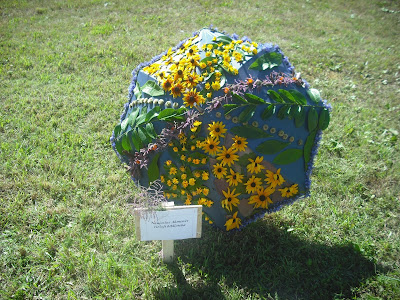2015 Naujosisos Akmenės city's festival Žolinė part 1.
Hey everyone!
Today is holiday, like a FEAST OF ASSUMPTION (lietuviškai - Žolinė)
Here is a little about Žolinė:
This is one of the most important feasts associated with the Blessed Virgin Mary, commemorating her bodily assumption into Heaven. “And a great sign appeared in the heavens: A woman, clothed with the sun, and the moon under her feet, and on her head a crown of twelve stars. (Apocalypse 12:1-6). Thus did Jesus’ beloved disciple, the Apostle John, describe his own vision of the Sun-clothed Woman - the symbol of a Church battling the evils of the world, against the biblical serpent.The dogma of Mary’s Assumption was proclaimed only in 1950, but we know that the event had already been celebrated in liturgy from the fifth century.
The customs and beliefs of European nations show that the Church’s feast of The Virgin Mary’s Assumption has encompassed and embraced many of that era’s pre-Christian traditions linked with the completion of the most important farming chores, as summer merged into autumn. That may be confirmed simply by considering the Lithuanian name for the feast - Zolilinė- (grass feast),which, in Dzūkija, has even been called Kopūstinė (cabbbage feast).
That day, in the holiday‘s most characteristic custom, various greens and garden flowers, and the year‘s first fruits and vegetables, are carried to the church to be blessed. For example, ladies in Dzūkija would include leafy carrots, turnips, peapods, beets and a head of cabbage, in the bouquets that they brought to the church. Girls would celebrate by weaving and wearing wreaths made up of nine different plants.
The blessed vegetables were eaten by the entire family, and mixed with their livestock‘s feed, to guard against sickness. Blessed grain was sprinkled into the corn-bin, and added to the seed-basket for the year‘s first sowing. Bunches of dried greens were held in the house, usually tucked behind a religious picture. During a thunderous storm, people would burn some of it as incense, and when they were sick, they used it to brew and drink tea.
Some older members of the Žaslių district peasant class still believed, as of the beginning of this century, that thistles could be removed from their fields by magical means. One thistle had to be pulled out and placed amid the greenery that is brought to the church and blessed. When brought back home, the blessed thistle had to be replanted in its original place.
It is evident that the custom calling for relatives to meet and visit during Žolinė, originated in deep antiquity. Residents of Tverečius would even say: “He who does not visit during Žolinė will always be poor.” This means that there is an obligation to participate in the community’s feast, as non-participation brings bad luck.
It is possible that this folk belief reflects the ancient custom of autumn gatherings - Dagos šventės (crop festivals) - mentioned by authors of the 16th century. Motiejus Strijkovskis, for example, in his “Chronicle“ (1582) said that during autumn, “when all the crops had been gathered in and brought to the threshing-barn”, group feasts were prepared by some villages. Grain had already been poured, long in advance, to make the beer for this occasion. On the day of the feast, cat tle were ritually slaughtered, cooked and eaten. Even the bread for this feast was baked according to ritual: Flour from the new crop was used to prepare dough that was fashioned into flat cakes that were slapped from hand to hand, then into the fire until done. Does this not appear to be a remnant of the way of life known in the distant past by roaming indoeuropean cat tlebreeders, having wandered into an ancient matriarchal agricultural region of Europe ?
Such community feasts were also observed in memory of departed kinfolk. Clearly, one who does not participate in the community’s collective thank offering, must believe that he has condemned himself to bad fortune. This, because God’s blessings are given only to those who live in harmony with their kin and act according to the community’s accepted and traditional standards of behavior. Just so do ancient cultic beliefs about the dead and agrarian traditions entwine themselves into the customs of Žolinė, reflecting family solidarity.
Most of this is forgotten today, and many people think of Žolinė as strictly a church holiday, never even giving a thought to the folkloric origin of its name.
(Source : http://www.viewoftherockies.com/Zoline.htm )
It's just part 1 because later will be concert and I will definettly go and take pictures.
 |
| Sport attractions |
 |
| Umbrella - bouquets of meadow flowers and berries exposure |
Which one you liked the most? I guess every craft needs prize, because of time and hard work making it! Loved all of them!
























